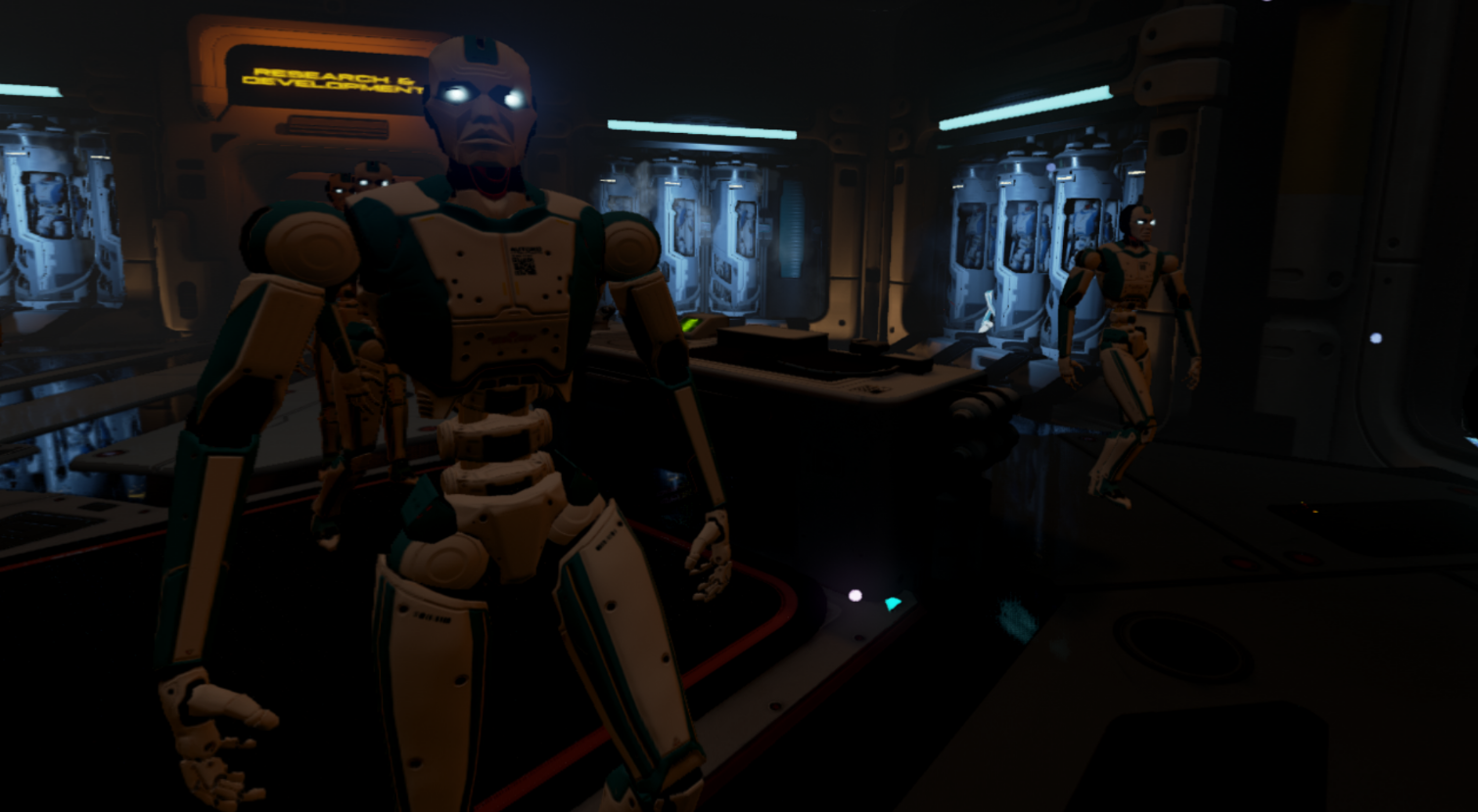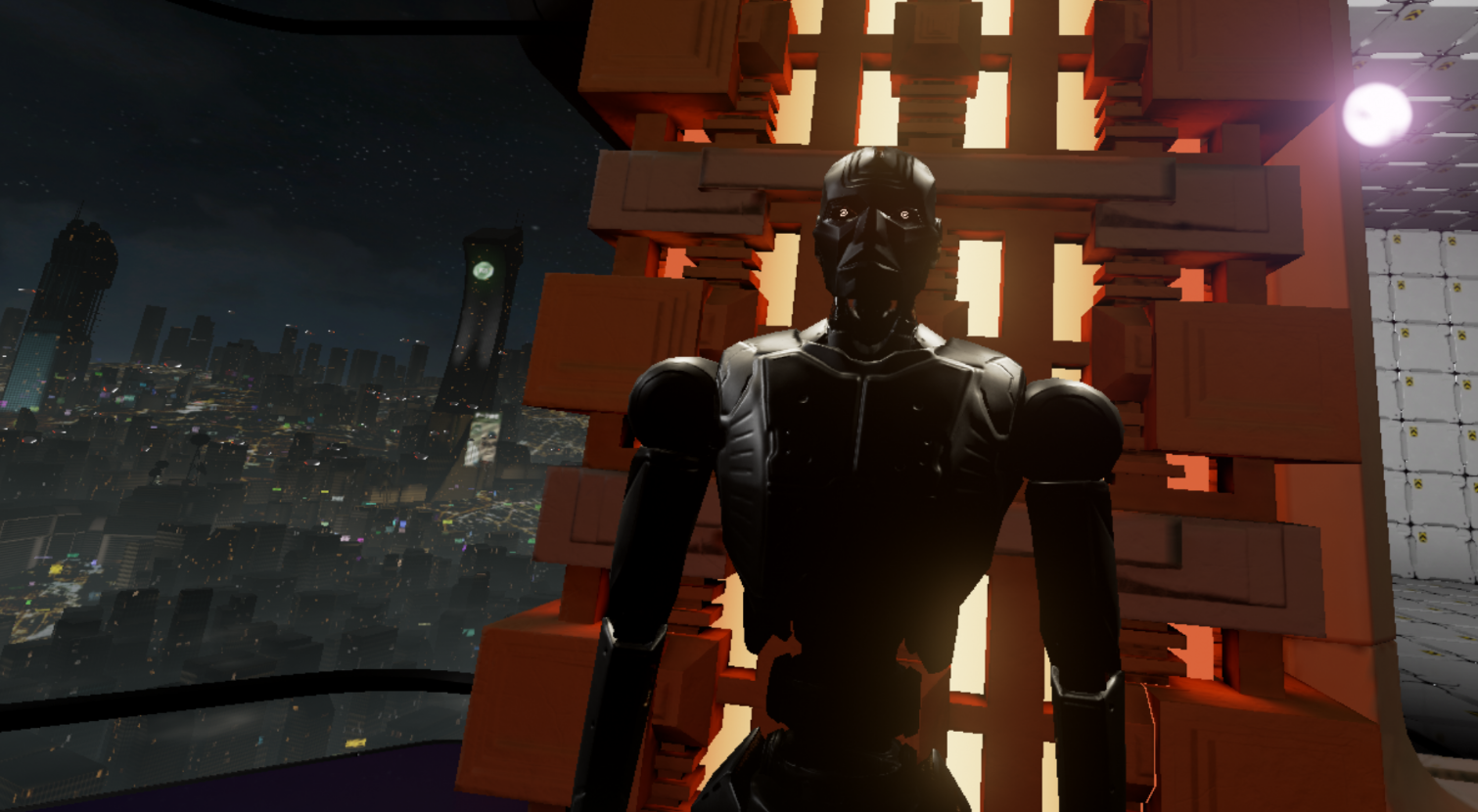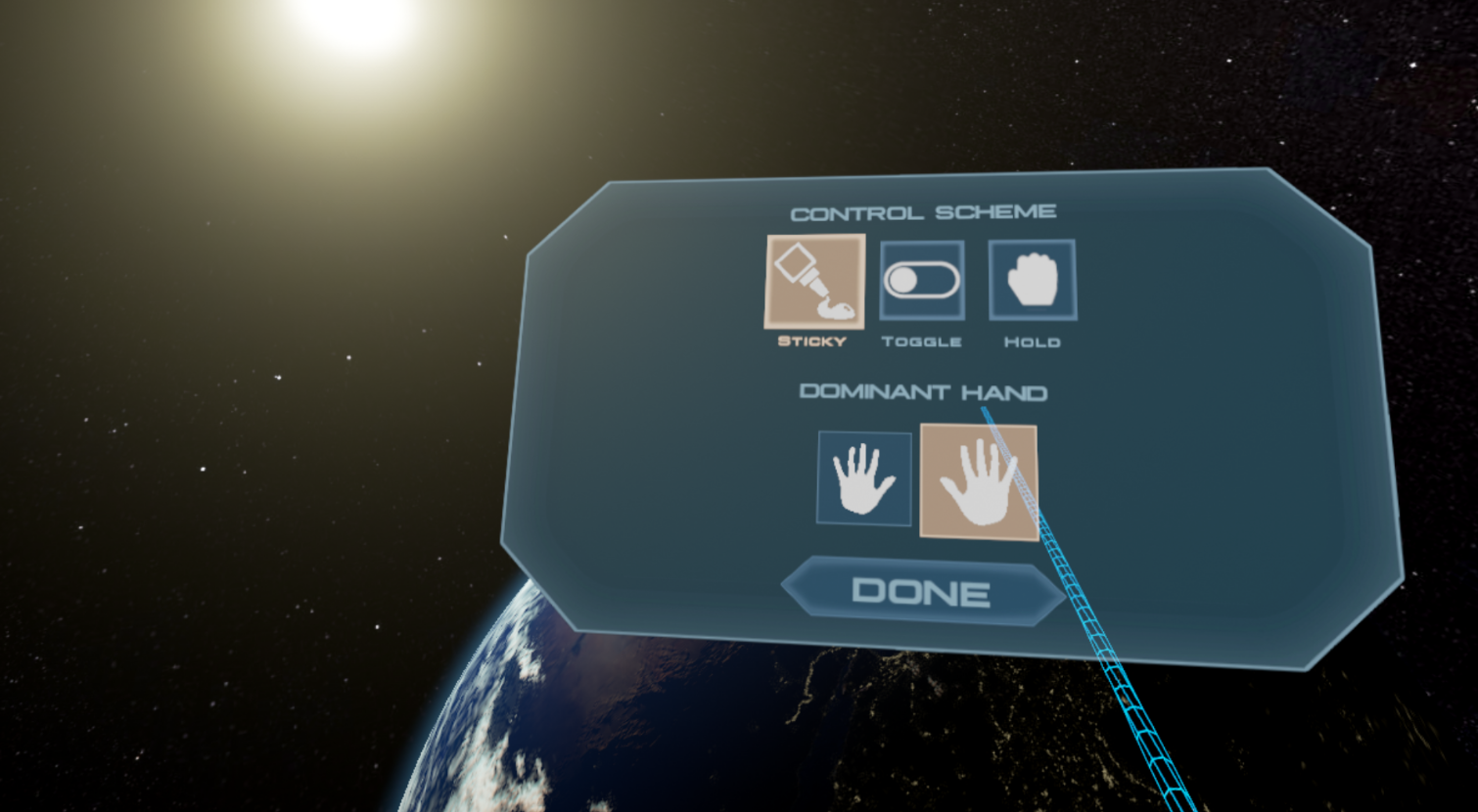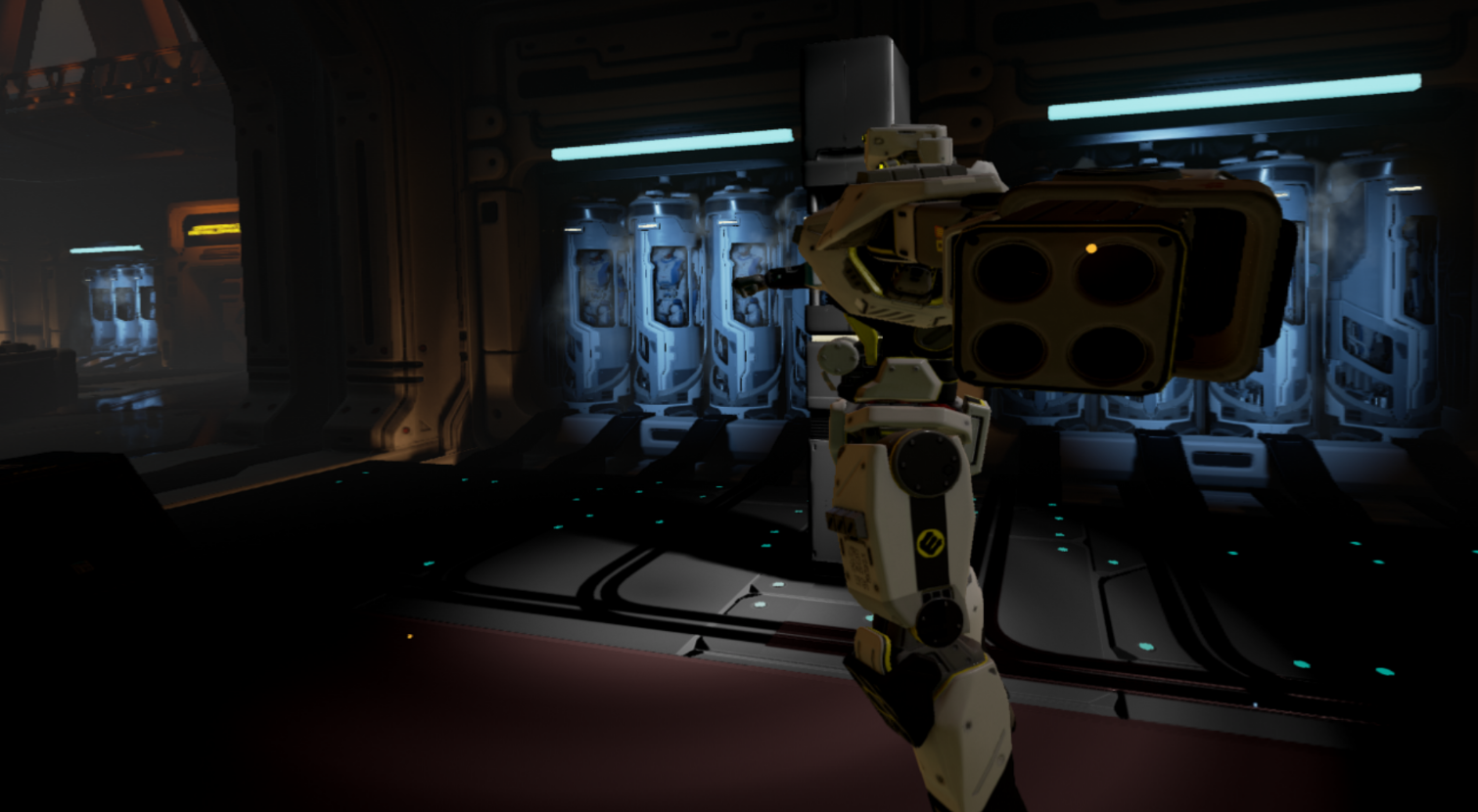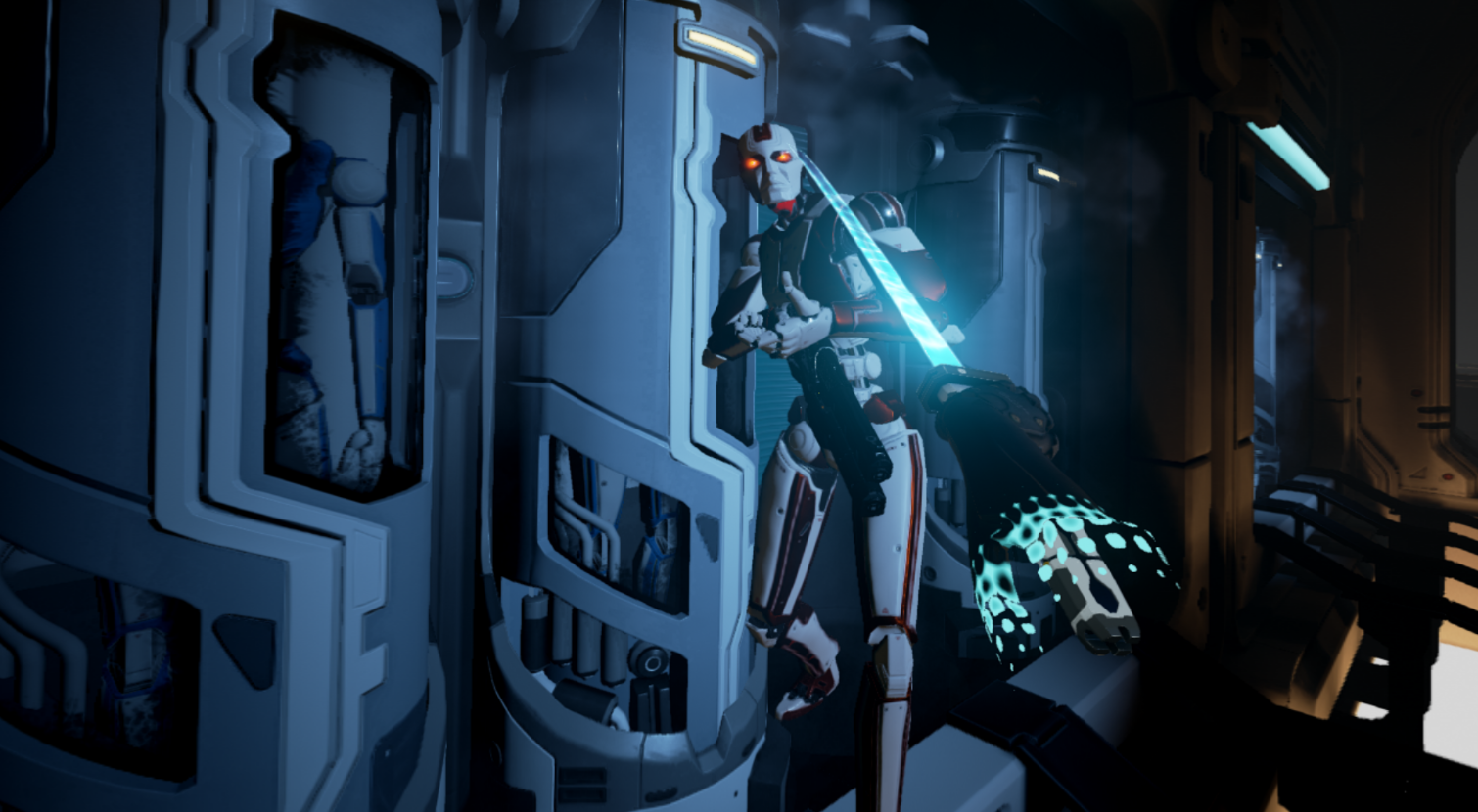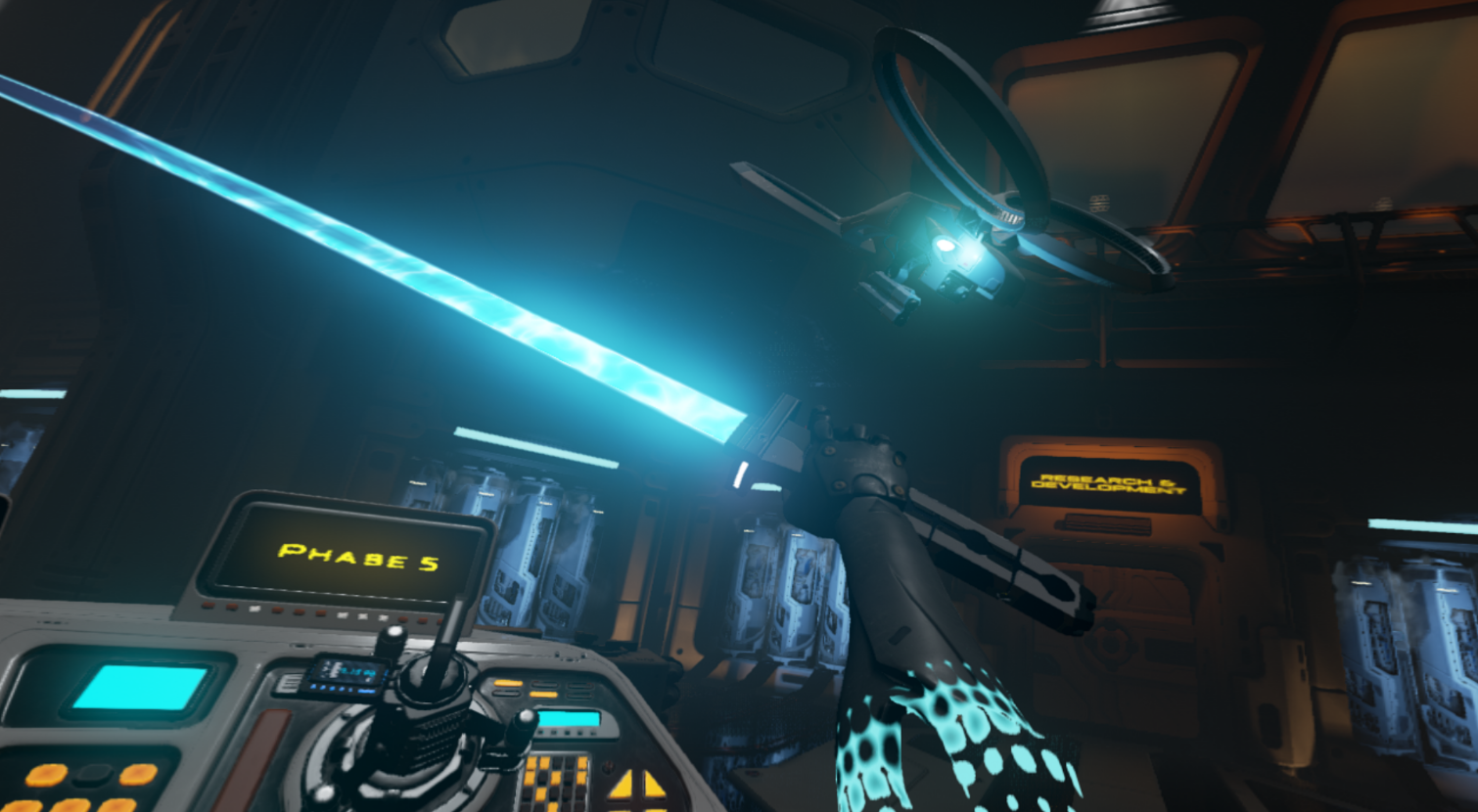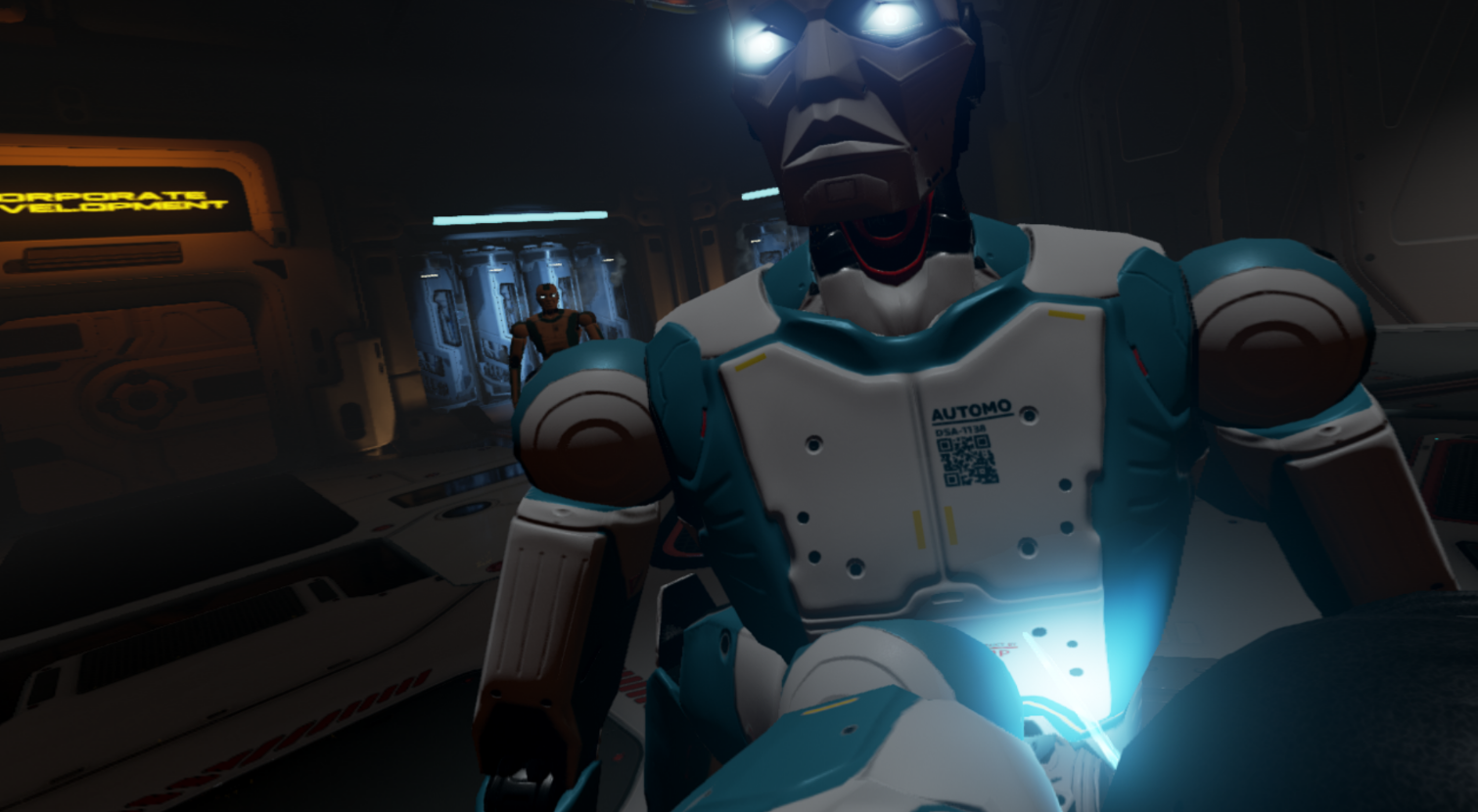‘Raw Data’ Brings True Fright To The VR Fight (Hands On)
Survios considers Raw Data an “active VR” game, but in my experience, it’s the fear, not the cardio, that gets your heart racing. I didn’t think I’d ever be scared of encountering a droid--that is until I played Raw Data.
Raw Data is a first person shooter for the HTC Vive. The game leverages the Vive’s room-scale tracking and the two 6-degree of freedom motion controllers to put you in the heart of the action. Raw Data is still under development, but last month the game was released to the Steam marketplace through Valve’s Early Access program. There are a number of features that aren’t established yet, such as the global leaderboards and achievements.
While Raw Data is far from complete, what Survios has done with this game is already impressive.
The backstory for Raw Data is still a little bit foggy, even after multiple hours of gameplay. The game takes place in a future where sophisticated artificially intelligent androids exist. You are part of a hacking mission to infiltrate the network of Eden Corp., which is designing these androids. You masquerade as a potential client seeking a first-hand look at the AI that you are supposedly purchasing. While on the tour, which is led by a computerized guide, you plug in a device that lets a partner on the outside hack into Eden Corp.’s internal network. The goal is to steal as much data as possible.
It’s not nearly as simple as the task might sound, though. It doesn’t take long for the AI to realize that you aren’t there to observe. Within seconds of plugging the data extractor into the network, the AI-controlled security system kicks in and deploys a series of androids to dispose of the threat.
Learn The Basics
Let’s back up a few steps here. Before you get to fight for your life, you have to learn the ropes.
When you first launch the game, you’ll find yourself in the center of a large, fancy room with hardwood floors and large bay windows. This is clearly the public lobby of Eden Corp. Around the circumference of the round room, you’ll find statues of the various android models the company builds. When you approach the displays, information about each model pops up in front of you.
Get Tom's Hardware's best news and in-depth reviews, straight to your inbox.
You’ll find the game’s menu system on three displays in the center of the room. Here you’ll be able select your loadout, change the game’s options, and choose between single player and multiplayer missions. In a future update you’ll also have access to the leaderboards, achievements, and unlock menus from here. On the right hand side you'll find a Steam friends window, which can be helpful to get multiplayer games with your friends going.
Before you can start your first mission, you have to run through some basic training sessions. You’ll learn how to handle your weapon and get a preview of what’s to come. Raw Data offers three different control options, and it’s a good idea to cycle through them all while you train to figure out which one works best for your play style.
You can choose between toggle mode, sticky mode, and hold mode. For toggle mode, you have to quickly press your grip button to grab onto objects. To holster your gun or drop what you have in your hand, you have to press the grip button again. This mode has an unexpected quirk. If you hold the grip buttons too long when you pick something up, letting go of the button will drop what you have in your hands. I found myself dropping the gun at inopportune times in this mode.
Sticky mode worked better for me, but your mileage may vary. This mode locks your weapon to your hands. You have to holster it or pick up another item to drop the one you have. I prefer this mode because it requires no thinking and it makes it hard to fumble your weapon. When you’re fighting for your life there’s no time to think about not holding a button for half a second too long.
Hold mode requires keeping the grip buttons squeezed at all times, otherwise you’ll be dropping your weapon on the ground. This mode offers the freedom to be a fancy hotshot and juggle your guns, but it mostly just adds unnecessary complexity to the gameplay. It wouldn’t be so bad if you could just bend down and pick it up, but that doesn’t appear to be possible. If you drop your weapon, it's gone, and then reappears in your holster a second or two later. Those precious moments could be the difference between living through the wave or succumbing to a horrible death at the hands of artificially intelligent robots.
The various training sessions are quite simple. They essentially teach you how to pull your weapon out and use its basic function. You also get a chance to hone your ability to aim and shoot effectively without worrying about an imminent threat. You can play through the first real mission before you finish all of the training modules, but they are all prerequisites for the second mission of the game.
Pick Your Poison: Pistols or Light Sword
When you first start Raw Data, you will have two loadouts to choose from. Eventually, there will be additional options (at least four), but for now, you have the choice between two protagonists. You can be a pistol-wielding bad-ass named Bishop, or you can be Saija and wield a sword of light, like you’re trying to be a Jedi. Both options have their pros and cons. Pistols give you the ability to clear your enemies from a distance, but if you find yourself surrounded, it can be overwhelming, especially if you have poor aim. The sword option necessitates that you get up close and personal in the fight; some enemies are easily killed by a single swing, while others pose a grave danger when attacking them at close range.
No matter which option you select, there will be upgrades along the way. You just have to fight a few rounds to earn them. For example, if you opt for Bishop, you’ll eventually earn an upgrade that gives you two pistols to work with. Saija quickly unlocks Shuriken Stream, which can be shot at distant enemies, and the ability to throw the light-sword like a boomerang to take out multiple androids at once.
Navigation
When Survios first revealed Raw Data in January, the game was a stationary, wave-based, cooperative first person shooter. You had a room-scale space to move around in, letting you duck, dive, and dodge incoming fire while firing back with pistols or deflecting shots with a light-sword. The early incarnation of the game didn’t have a function that let you move around the room, but the actual release of the game does.
You have the ability to roam the environment by teleporting around using a mechanic similar to Cloudhead Games’ Blink system. The touchpad on your left controller activates the teleport system. You’ll see a green marker on the ground that indicates where you’ll end up. Unlike Blink, this teleport system doesn’t let you adjust your orientation when you move. When you move, you will be facing whichever direction you were facing before you moved.
Having the ability to roam around the room makes it fairly easy to dodge enemies, and it actually makes choosing the sword viable.
That Wasn’t So Bad
The first mission is but a primer for what’s the come. You take an elevator to a storage facility below the lobby and begin the hack. The security system will kick in and the androids will start to attack. After each wave of attacks, your partner on the outside will regain control of the situation, allowing you to take a breather in between rounds. It’s up to you to initiate the next wave of attacks.
During each wave, the enemies will get progressively more aggressive and numerous. You will fight off basic white and blue androids at first. These enemies pose little threat unless you let them get close to you. Picking them off with accurate shots is critical. Headshots are key, otherwise you’ll waste too much time per enemy. The red androids are a bigger concern. These models are loaded with incendiaries that explode when you kill the droid. They will take you out if you’re too close, but they can also be handy to clear a group because they will also blow up other surrounding androids.
You’ll also encounter drones flying overhead. They will fire blue lasers at you. If you are wielding the light-sword, you’ll have to deflect those shots back at the drones. Pistols are much more effective against the drones.
Eventually, Eden Corp. will pull out the heavy artillery and send in giant mech-like androids with rocket launchers strapped to their shoulders. These enemies will take a few shots, but they aren’t too difficult. Just make sure to dodge the rockets—or better yet, shoot them as they leave the launcher so they blow up in the ‘droids face.
As long as you have decent aim, the first mission will be pretty easy. I didn’t find myself in danger at all when I had the pistol. The sword is much harder to use in this mission, but the threat is minimal, regardless. You just have to sneak up behind the rocket-wielding bots.
My Heart Is Racing!
If the first mission doesn’t sound interesting, don’t worry. It escalates quickly.
The first mission had me moving around a little bit, but other than swinging the sword around, I wasn’t really getting my heart rate up. That changed very quickly in mission two, and fear entered the experience.
Round two sends you to another storage room, but this one has had a maintenance issue. The lights are out, so you are at the mercy of the flashlight attached to your pistol. If you’re rocking the light-sword, good luck. The sword is the only source of light that you’ll be carrying.
This situation wouldn’t be so bad if you were up against the same predictable enemies as before, but this time Survios set it up so that you’ll be facing a number of jump scares.
In the second mission, some of the androids that come at you don’t have legs, which means they crawl on the ground when they attack. This doesn’t sound bad, but trust me, it’s unnerving. People think The Brookhaven Experiment is frightening, but I was perfectly calm in that game. Jumping legless androids in Raw Data made me scream and curse, as they crept up on me and jumped in my face.
When I switched to the light-sword, things were a little bit better at first. I was able to defend myself from the flying robot torsos, but there are so many red androids in this mission that it’s incredibly challenging to avoid blowing yourself up. Even with upgraded equipment, I’ve not been successful at completing mission two with the sword.
Loadout Upgrades
For every round that you play, you will accrue credits in the game that can be used to purchase loadout upgrades. These upgrades included the dual-wield for Bishop and the Shuriken Stream for Saija.
Bishop also has: "proximity reload," which lets you hover your pistol next to your holster to reload it (a necessary prerequisite for dual-wield); "charged shot," which deals an extra powerful penetrating blow; and "bullet storm," which sends a barrage of nano-bullets that don't affect your ammo supply.
Saija has: "levitation smash," which elevates you into the air and drops you hard to create an area of effect attack; "gravity thrust," which lets you harness the power of gravity to knock enemies back or pull them towards you; and the previously-mentioned "katana throw."
These extra abilities can be somewhat of a double-edged sword. The additional weapons help fight the variety of enemies that you will encounter, but they add a level of complexity, which isn't helpful when you're already frantic. I found myself forgetting to deploy the advanced weapons, especially with Saija, because I was too focused on survival. I'm sure it will eventually become second nature, but for a beginner, it can be a bit overwhelming at times.
Better With A Teammate
You can play the game solo, but Survios designed Raw Data to be better as a multiplayer experience. The game features two-player online cooperative play. When you’re playing with another player, the idea of using the light sword becomes much more compelling. As long as one of you is equipped with real firepower, the sword can be a great benefit to the team, thanks to its ability to mow through basic droids quickly.
Having a teammate to watch your back goes a long way to making the game easier and less frightening. The jump scares still jostled me either way, though.
Survios promotes Raw Data as an active VR game, which I feel is a slight stretch. Sure the game will get you off your butt and onto your feet. And yes, you’ll be spinning around somewhat frantically to keep the robots at bay, and swinging your arms with gusto when you’re equipped with the light-sword, but there are a number of Vive games that require considerably more activity, such as Space Pirate Trainer and Holopoint. Because you can lean heavily on the teleport function, there’s little reason to actually move around within your play space, which somewhat defeats the purpose of promoting the game as Active VR.
Rather than worry about the activity level of the game, you should anticipate the rush you’ll get out of it. Fighting hordes of lifeless artificially intelligent androids definitely ranks up there. If you’re looking for a game that will get your heart pounding, Raw Data might just be the experience you’re looking for.
Raw Data from Survios is available now on Steam. The game is currently in Early Access and should receive regular updates. Unlike many games released in Early Access, Raw Data is not discounted for early adopters.
Kevin Carbotte is a contributing writer for Tom's Hardware who primarily covers VR and AR hardware. He has been writing for us for more than four years.
-
kcarbotte Reply18478579 said:looking at those horrible skewed screenshots makes me sick already
junk
The screenshots were taken while playing. They are related to the head position at the time. It doesn't look "skewed" from inside the game.
